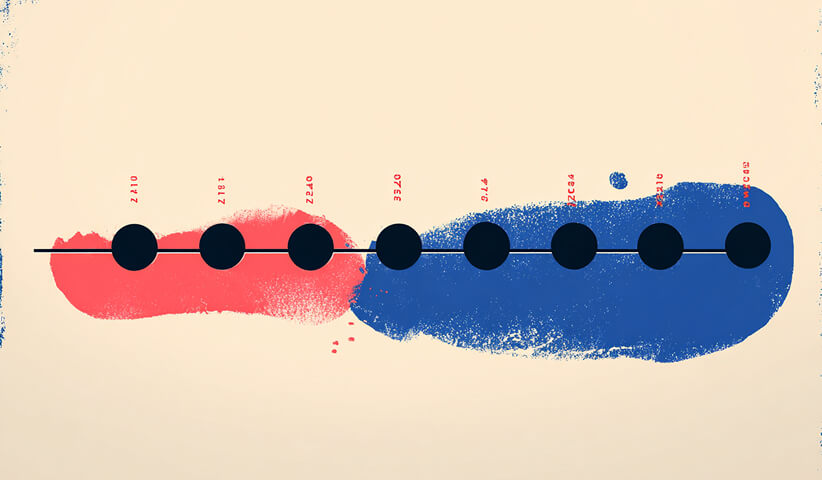Costs of Scope Creep: How to Protect Yourself When Specs Change Mid-Project
10/29/2025
Business
Discover how to prevent costly project overruns by learning what causes scope creep—and how to manage mid-project changes with clarity, structure, and confidence.

Every creative or web project starts with exciting new ideas, shared goals, and clear deliverables. But then it happens: “Could we just add this?” “What if we tweak that feature?”
.png)


When “Just One More Thing” Becomes a Problem



Individually, these requests sound harmless. Together, they snowball into scope creep, the silent budget killer of creative projects.
At The Branded Agency, we’ve seen both sides: teams overextending, and clients frustrated when costs climb unexpectedly. The solution isn’t to stop changes, it's to manage them strategically.
What Is Scope Creep (and Why It Happens So Often)
Scope creep occurs when project requirements expand beyond the original agreement often without adjusting time, cost, or resources.
It’s rarely malicious. Most of the time, it begins with good intentions, better ideas, clearer direction, or stakeholder feedback that emerges mid-stream.
The Subtle Ways Scope Creep Starts
- “Can we make a quick change?” (that takes 6 hours)
- “Let’s add a few more pages.” (without adding budget)
- “Our CEO has feedback. Can we revise everything?”
What starts as small tweaks can add up to dozens of extra hours and weeks of delay.
Common Scenarios in Creative, Dev, and Marketing Projects
In Webflow design or development, scope creep often appears as:
- Adding extra pages or interactions post-design.
- Expanding CMS collections mid-project.
- Reworking approved designs after new input.
- Introducing third-party integrations late in the build.
Each small shift seems minor but when timelines and deliverables move without structure, everything becomes unpredictable.
The True Cost of Scope Creep












Scope creep doesn’t just increase costs it disrupts momentum, morale, and trust.
Financial Overruns
When new tasks sneak in without re-scoping, costs quietly inflate.
A $10,000 project can become $13,000–$15,000 without formal approval and that friction damages both sides of the partnership.
Timeline Delays
Every added feature or revision pushes milestones back.
Designers wait for decisions, developers pause for updates, and review cycles stack. Suddenly, a 6-week timeline becomes 12.
Team Burnout and Quality Drop
Frequent changes create context switching and frustration.
Teams rush to stay on schedule, which leads to errors, rework, and decreased creative quality.
Client Frustration and Misalignment
Ironically, scope creep often hurts the client most.
Without structure, communication breaks down and what started as collaboration becomes a negotiation.
Why Specs Change Mid-Project
To prevent scope creep, you have to understand why it happens in the first place.
Unclear Goals and Incomplete Discovery
If a project begins without clear goals or detailed discovery, surprises are inevitable.
Rushed onboarding or vague creative briefs are the top predictors of mid-project scope shifts.
Stakeholder Misalignment
New voices enter the room, a new VP of Marketing, an investor, or another department head.
Each adds input that redefines priorities, often without revisiting project parameters.
Evolving Business Needs
Sometimes, scope change is valid.
When market shifts, product pivots, or brand updates occur mid-project, teams must adapt but adaptation should follow a structured change process.
Want to learn more about Project Management, Scope Planning, and AgencyTips? Keep reading!
If you need help managing your next project or defining its scope, contact us for a free custom consultation.
How to Protect Yourself From Scope Creep

Define Clear Scopes and Change Policies Early
A good Statement of Work (SOW) defines exactly what’s included and how to handle additions.
This clarity protects both the agency and the client from misunderstanding.
Use Detailed Statements of Work (SOWs)
Break deliverables into clear milestones:
- Strategy & Discovery
- Design & Development
- Launch & Optimization
Each should list outputs, timelines, and what counts as a change.
Adopt Milestone-Based Checkpoints
Review progress in stages.
This helps identify changes early and allows both sides to adjust budgets before small issues become big problems.
Track Time, Revisions, and Change Requests
Use project tools like Asana, Notion, or ClickUp to document every change.
This transparency keeps everyone accountable and provides data when re-scoping becomes necessary.
Communicate Constantly, Document Everything
The most successful projects have weekly check-ins and written recaps.
Even a short “Here’s what changed and what it means” email prevents misalignment and keeps expectations realistic.
How Agencies Like The Branded Agency Manage Change Responsibly
At The Branded Agency, we view scope management as part of our creative discipline.
Structured Discovery and Scope Definition
Before design begins, we align on goals, stakeholders, and success metrics.
That discovery phase prevents “surprise” requests later and ensures that creative decisions connect directly to business outcomes.
Transparent Change Management
When change is needed, we handle it through a clear change request process outlining the added value, revised cost, and adjusted delivery timeline.
That transparency maintains trust while keeping projects healthy.
Proactive Client Education
We guide clients through what’s possible within the current scope and when additional investment creates higher ROI not more chaos.
FAQs About Scope Creep in Creative and Web Projects

1. How does scope creep affect budgets and timelines?
Unmanaged scope creep quickly inflates costs and delays delivery. For example, a $10,000 project can easily grow to $13,000–$15,000, while a six-week timeline may stretch to twelve weeks—leading to financial overruns, reduced quality, and team burnout.
2. How can agencies and clients prevent scope creep?
Prevention starts with a clear Statement of Work (SOW), milestone-based checkpoints, and consistent communication. Documenting every change request and aligning on deliverables helps both sides stay accountable.
3. What should be included in a Statement of Work (SOW)?
A strong SOW should outline:
- Deliverables and outputs
- Timelines and milestones
- Change request policies
- Exclusions (what’s not included)
This ensures transparency, alignment, and protection for both client and agency.
4. Can scope creep ever be a good thing?
Yes—if managed correctly. Sometimes changes reflect valid business needs, like a market pivot or a new product launch. The key is to route changes through a formal process that reassesses budget and timeline instead of forcing teams to absorb the cost.
5. How do agencies handle scope creep responsibly?
Agencies like The Branded Agency use structured discovery, transparent change management, and proactive client education. This ensures that changes are evaluated strategically for ROI rather than added haphazardly.
6. What tools help track and manage scope changes?
Popular tools include Asana, ClickUp, Notion, or Jira for tracking revisions, documenting scope changes, and maintaining accountability across teams.
7. How does scope creep impact client-agency relationships?
If unmanaged, scope creep erodes trust, morale, and quality. But when handled transparently, change requests can strengthen collaboration—turning potential conflict into opportunities for better outcomes.
Set Boundaries That Build Better Outcomes
Scope creep isn’t just a project issue it’s a relationship issue.
When teams communicate openly, document decisions, and manage change transparently, both sides protect what matters most: trust, quality, and outcomes.
At The Branded Agency, we specialize in building structured, collaborative processes that protect your budget while delivering exceptional creative work.If you’re ready for a partner who manages complexity with clarity, contact us to start your next project with confidence.

Quincy Samycia
As entrepreneurs, they’ve built and scaled their own ventures from zero to millions. They’ve been in the trenches, navigating the chaos of high-growth phases, making the hard calls, and learning firsthand what actually moves the needle. That’s what makes us different—we don’t just “consult,” we know what it takes because we’ve done it ourselves.
Want to learn more about brand platform?
If you need help with your companies brand strategy and identity, contact us for a free custom quote.
We do great work. And get great results.
+2.3xIncrease in revenue YoY
+126%Increase in repurchase rate YoY








+93%Revenue growth in first 90 days
+144% Increase in attributed revenue








+91%Increase in conversion rate
+46%Increase in AOV








+200%Increase in conversion rate
+688%Increase in attributed revenue












